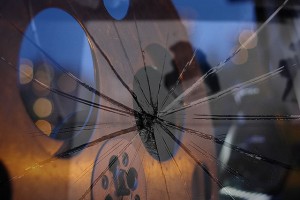 In a recent heated discussion I was told, “Hollywood is liberal.” That’s bullshit, I said.
In a recent heated discussion I was told, “Hollywood is liberal.” That’s bullshit, I said.
“But the themes they use in their stories—they’re liberal,” they rebutted. Again, bullshit.
The proof is in the numbers. Hollywood is a backward institution, the leadership and ownership of which are overwhelmingly white and male.
Entertainment looks as bad if not worse than most other industries in the U.S., when diversity measurements are compared. The entertainment industry in no way resembles the public to which it sells its wares, whether in front or behind the camera.
For women, a majority of the population at 51%, the numbers are grim:
- Males outnumber females 3 to 1 in family films. In contrast, females comprise just over 50% of the population in the United States. Even more staggering is the fact that this ratio, as seen in family films, is the same as it was in 1946.
- Females are almost four times as likely as males to be shown in sexy attire. Further, females are nearly twice as likely as males to be shown with a diminutive waistline. Generally unrealistic figures are more likely to be seen on females than males.
- Females are also underrepresented behind the camera. Across 1,565 content creators, only 7% of directors, 13% of writers, and 20% of producers are female. This translates to 4.8 males working behind-the-scenes to every one female.
- From 2006 to 2009, not one female character was depicted in G-rated family films in the field of medical science, as a business leader, in law, or politics. In these films, 80.5% of all working characters are male and 19.5% are female, which is a contrast to real world statistics, where women comprise 50% of the workforce.
[Source: Geena Davis Institute on Gender in Media]
Boldface above is mine; the numbers are beyond absurd when it comes to female directors. The Directors’ Guild of America has a folder (binder, if you’d rather) with the names of 1200 female directors. The Director’s List has collected the names of 1800 female directors, even larger than the DGA’s binder full of women.
But the number of women contracted by the major studios to make films is in the single digits?
That’s far from liberal by any stretch of the imagination.
The lack of women behind the camera distorts what the public sees before it:
- Only 15% of all clearly identifiable protagonists were female (up 4 percentage points from 2011, down one percentage point from 2002), 71% are male, and 14% are male/female ensembles (see Figure 1).
- Females comprised 29% of major characters, down 4 percentage points from 2011, but up 2 percentage points from 2002.
- Females accounted for 30% of all speaking characters (includes major and minor characters) in 2013, down 3 percentage points from 2011, but up 2 percentage points from 2002.
[Source: It’s a Man’s (Celluloid) World: On-Screen Representations of Female Characters in the Top 100 Films of 2013, Martha M. Lauzen, PhD, Center of the Study of women in Television and Film, San Diego State University (White paper, PDF)]
Nor does it appear to matter whether film or television, when looking at the composition of directors. White men hold nearly identical percentages of directors’ slots in either media.— roughly 70%.
What does a crowd with realistic, or even equitable representation of women look like? We can’t rely on Hollywood to show us, based on this data. Our societal mirror is broken, at the expense of our mothers, daughters, sisters, ourselves. Read more →

